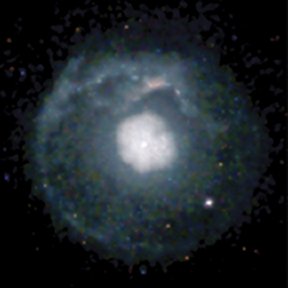This X-ray portrait of a young supernova remnant—the remains of a massive, exploded star—combines 12 days of telescope time. That’s how long it took NASA’s Chandra X-ray Observatory to discern a shell of hot gas surrounding the supernova’s bright core. The shell formed when a shock wave from the explosion plowed into surrounding space.

Astronomers had previously reasoned that some explosions lack the oomph to produce a shock wave because shorter observations with other telescopes indicated that the remnant pictured here, called G21.5-0.9, doesn’t have a shell. Researchers now suggest that shells are always present, but that unusually low-density interstellar material leads to faint ones. The astronomers have reported their findings online (http://xxx.lanl.gov/abs/astro-ph/0504369).







